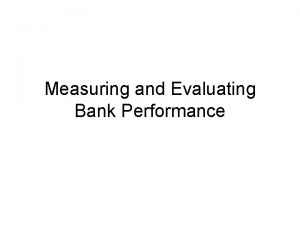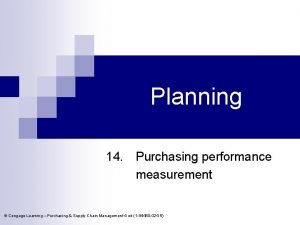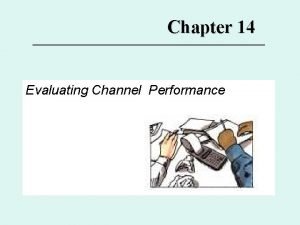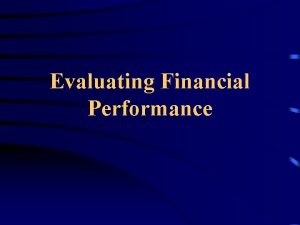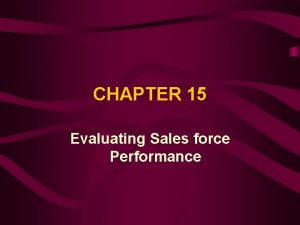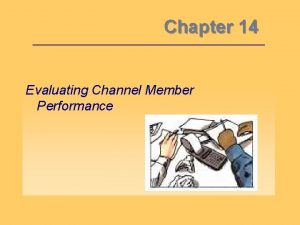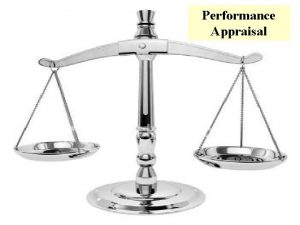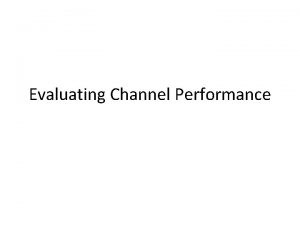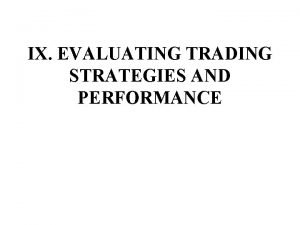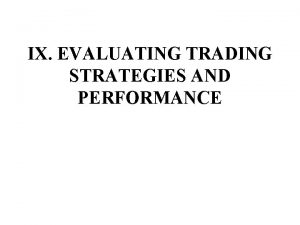Monitoring and Evaluating Performance Monitoring Evaluating Performance In









- Slides: 9

Monitoring and Evaluating Performance

Monitoring & Evaluating Performance �In order to continue to improve we must monitor and evaluate performance and the performance development process �Monitoring occurs WHILE you are training �Evaluation occurs AFTER you finish training

Monitoring & Evaluating Performance �Evaluation is concerned with whether the training/practice you have put into place has actually worked. �This involves revisiting original methods of data collection used to gather initial data about performance

Monitoring Performance � Methods of monitoring performance: ▪ Personal reflections diary ▪ General observation schedule ▪ Coach feedback ▪ Fitness tests ▪ Training diary card ▪ Scatter diagram Methods of monitoring can be used during a development program to ensure you are aware if improvement is happening. This will help you to make sure you make training more demanding (F. I. T. T. etc. ) in order to continue improving.

Monitoring Performance The importance of feedback Feedback is information received by a performer about their performance. � Positive feedback helps your performance improvement � Effective feedback needs to be positive � Feedback needs to be precise and accurate � One or two points of feedback given at a time � Feedback should be given as soon as possible after performance

Is how you feel about your own performance. E. g. You took a shot that was unsuccessful because the ball hit the front of the ring. You would know that next time you shoot you would have to shoot with more power. INTERNAL FEEDBACK Feedback

Monitoring Performance The importance of feedback The feedback you receive from teacher/coach/partners as well as your own personal reflections on how you felt before and during a performance will often back up what your development process has told you. You must be willing to take on board the feedback given and use it to help develop your performance further.

Evaluating performance � The evaluation of how effective your approaches to development have been should be a straightforward comparison between what your performance was before you started training and what it is after completing training: � Methods of evaluation: ▪ ▪ ▪ Standardised Fitness Tests Questionnaire SCAT test Scatter diagram (before and at end of program) Observation schedule

Benefits of monitoring and evaluating � To help with your own motivation and desire to improve � To help with forward planning � To see whether the approaches you have used have been suitable, challenging and successful � To allow you to make changes to your approaches � To make comparisons � To see whether you have met your development needs � To help you identify future development needs
 Higher pe monitoring and evaluating
Higher pe monitoring and evaluating Bank performance
Bank performance Purchasing performance evaluation
Purchasing performance evaluation Sales force performance
Sales force performance Sales force evaluation process
Sales force evaluation process Importance of evaluating channel member performance
Importance of evaluating channel member performance Exiberating
Exiberating Lesson 3 evaluating economic performance
Lesson 3 evaluating economic performance Evaluating sales force performance
Evaluating sales force performance Evaluating channel member performance
Evaluating channel member performance

